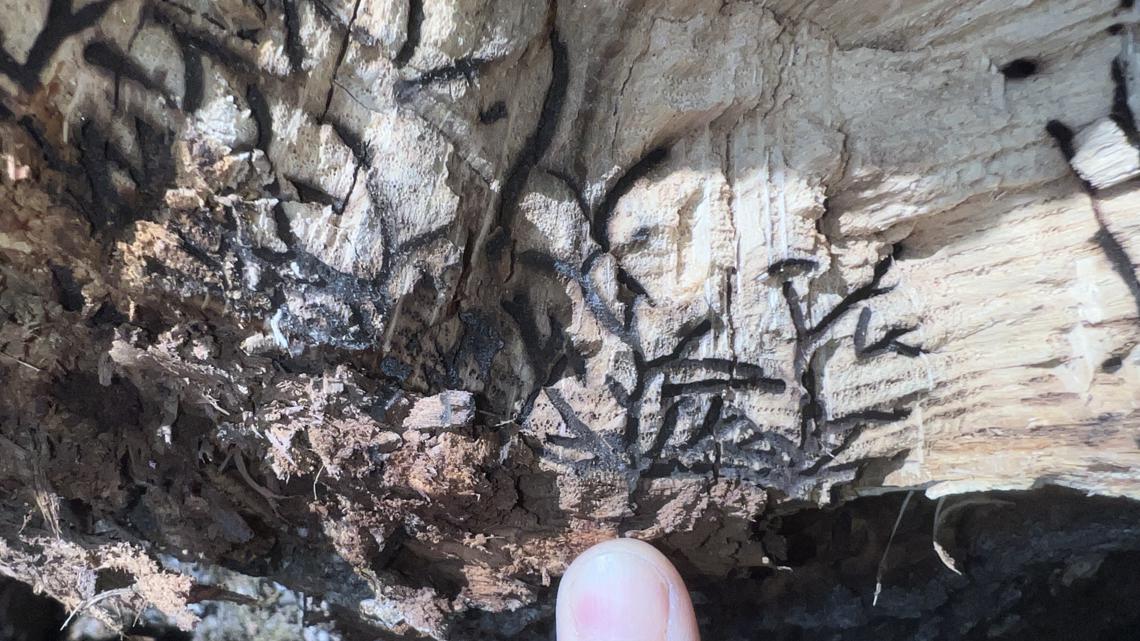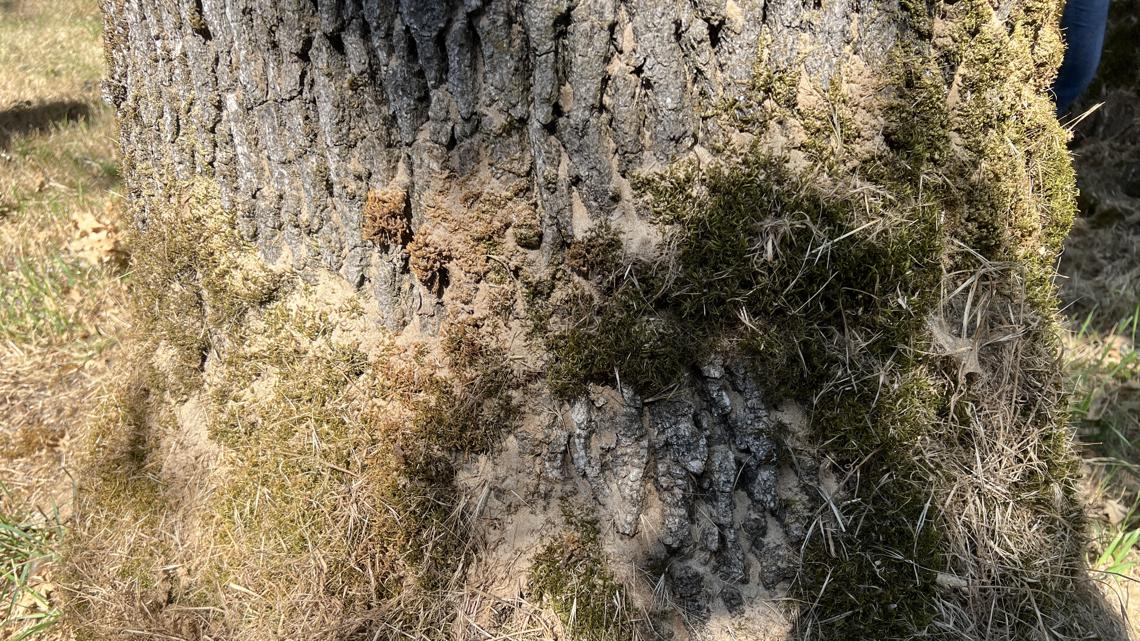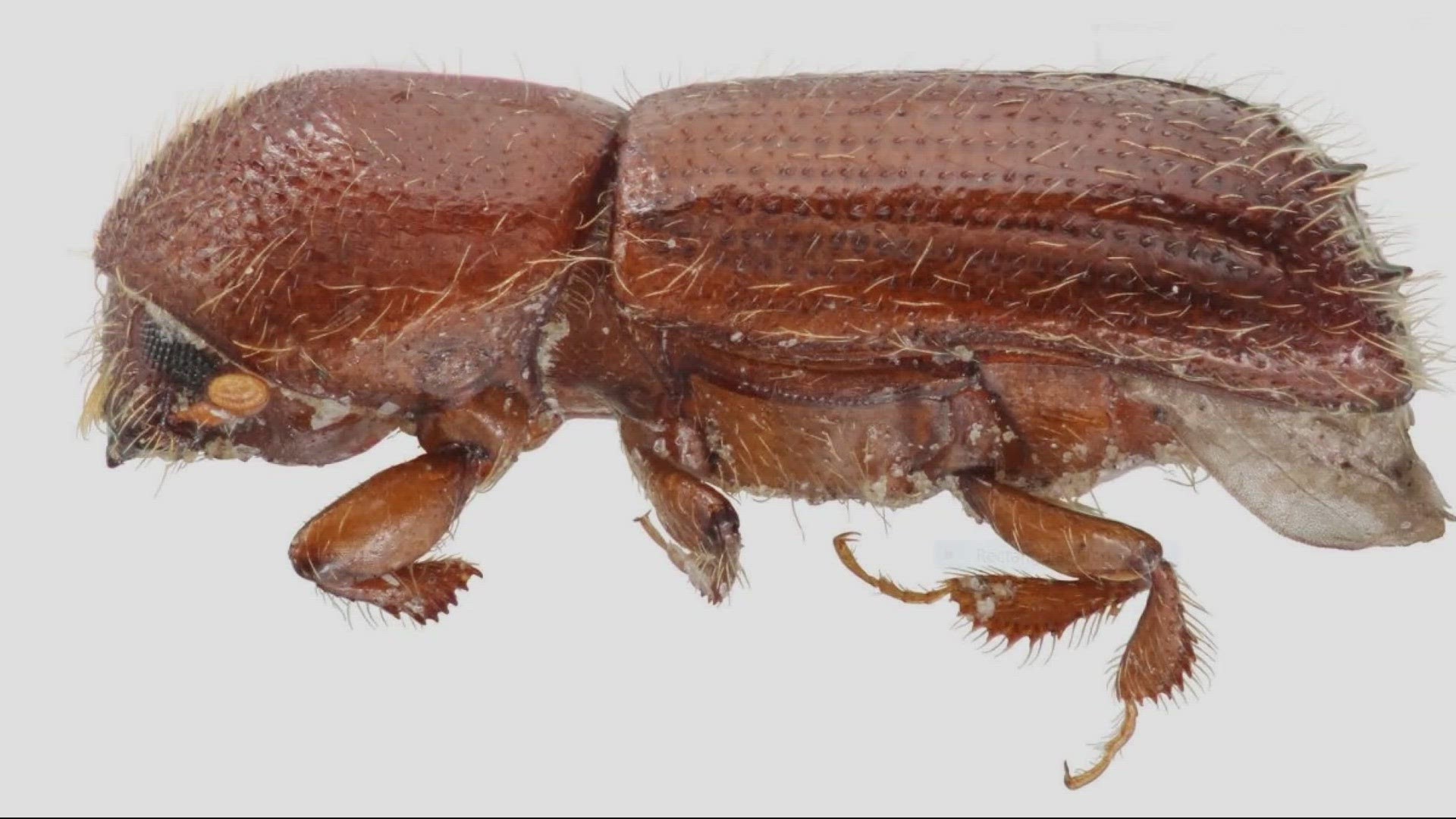WILSONVILLE, Ore. —
The Mediterranean oak borer, a miniscule beetle no bigger than a sesame seed, has been discovered in trees around the Portland area.
The invasive pest native to Europe, the Middle East and North Africa — could spell trouble for the Oregon white oak, an iconic species that was once the dominant tree in the Willamette Valley.
“We are concerned about it because it is in a drought tolerant native tree,” said Christine Buhl, forest entomologist with the Oregon Department of Forestry. “So that in itself is a big deal. How fast it will spread and how quickly it will kill trees, we just don't know yet.”
The beetle was discovered in California in 2017, but Buhl said genotyping has shown that the insects discovered in Oregon likely didn’t come from our neighbor to the south.
“We suspect that the populations that we have found came from Germany, which is different from the populations that have entered California,” she said.
In 2018, one of the bugs was found in a trap in Multnomah County with more beetles turning up in traps in Marion County in 2020 and in Clackamas and Washington counties in the following years.
There weren’t any cases of actual infestation until earlier this year, when an oak tree in the Sandy River Delta was discovered to be infested. Since then, several more trees in Wilsonville were confirmed to be infested by the pest.
The discovery comes roughly a year after invasive pest, the emerald ash borer, was found near Forest Grove.
The Mediterranean oak borer typically attacks trees by boring small, perfectly circular holes in bark crevices. They then burrow through the tree, leaving tunnels, also known as galleries, in a branching pattern throughout the tree’s interior.


But it isn’t actually the beetles themselves that kill the tree. The bugs secrete a fungus as they move through the wood, which causes a disease that cuts the tree off from its water supply.
“It's an oak wilt and basically what that does is it interrupts the xylem,” said Buhl. “Xylem are the straws that bring in water and translocate it through tree so it basically will cut off the ability of those vessels to translocate water.”
Cut wood shows these galleries, laced with black fungus.


Over the course of three to five years, the tree will start showing signs of die back — browning leaves and eventually whole limbs, usually near the top of the tree, dying off. If enough of the canopy dies, that means the entire tree’s days are numbered.
Buhl said residents should take a close look at oak trees around their homes for signs of infestation. The entry holes, measuring about the size of a pencil lead, can be tricky to spot, but the bugs kick out a fine, pale powder, called frass, that is one of their tell-tale calling cards. The presence of frass, along with die back in the upper branches, are good signs that a tree might be infested.


Buhl did note, though, that there are many insects, both native and non-native, that can mimic the symptoms of Mediterranean oak borer infestation, so it’s best to have an expert inspect any tree that appears suspect.
“Unfortunately, there are a lot of different things that attack oak that this can be confused with,” she said. “We do want people to make sure that they actually have an infestation before removing a tree.”
Suspected infestations can be reported through the state’s online hotline.
If an infestation is confirmed, the best course of action is to remove the tree and have it destroyed on site. Moving wood from an infested tree could spread the pests even further.
Before the Willamette Valley was dominated by agriculture, it was dominated by savannahs of madrone, ponderosa pine and Oregon white oak.
The trees still play an important role in the valley. They are resilient — showing good tolerance to both drought and high temperatures – making them integral parts of many restoration projects.
“They're really drought tolerant, so in a time of climate change, this is a really great tree that we can plant on our landscape,” Buhl said. ““These trees also are homes and food sources to a variety of wildlife, from birds to squirrels. The acorns are a heavy-duty food source for a lot of these creatures.”
There are still a number of unanswered questions about what kind of damage the oak borer will cause in Oregon. Experts are still working to determine where the beetles came from, if they only attack stressed trees and whether every infestation will be fatal for the tree.
One thing they are certain about, though. The best way to protect Oregon’s oak trees is to keep the pests from spreading
“When you have an invasive insect that comes into an area, there really isn't a whole lot that you can do to eradicate it, if anything at all,” Buhl said. “But slowing the spread is effective. So we're tackling that head on.”

